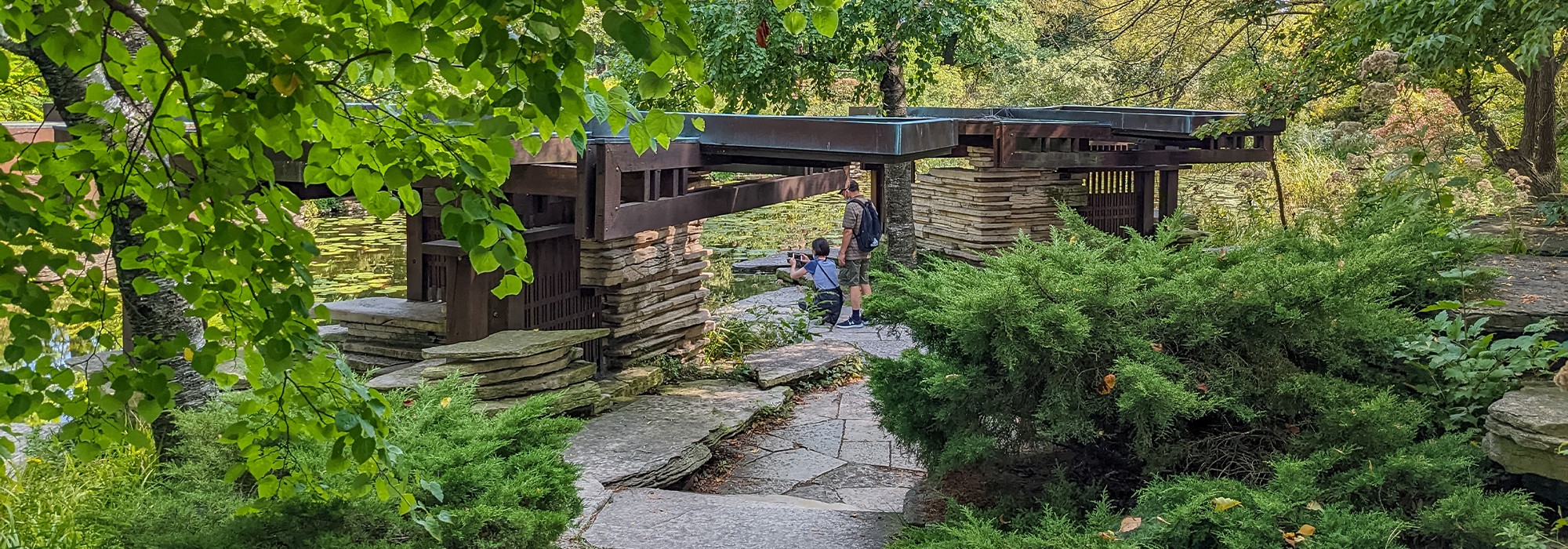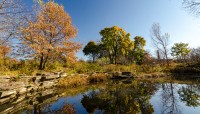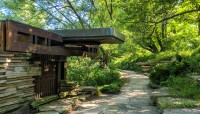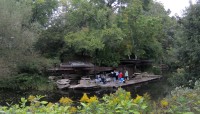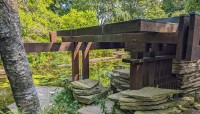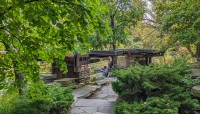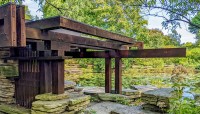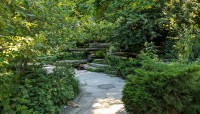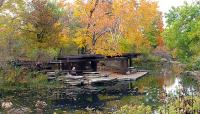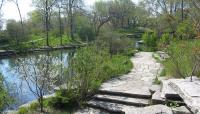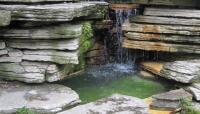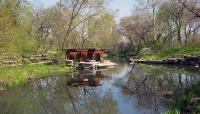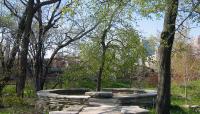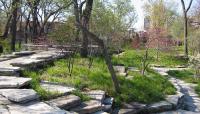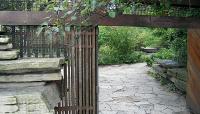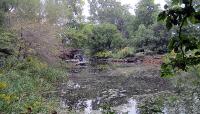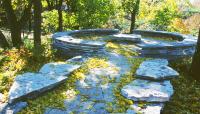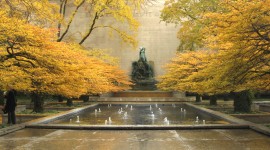Landscape Information
Designed by landscape architect Alfred Caldwell in the 1930s while serving as an employee of the Chicago Park District, the 2.5-acre Lily Pool replaced a Victorian-era pool and garden (1889) that displayed lilies and other tropical plants. Constructed with Works Progress Administration (WPA) funds, the landscape exemplifies Caldwell’s Prairie Style. It was Caldwell's intent for the site to become "a hidden garden for the people of Megalopolis [of Chicago]."
Nestled into Lincoln Park, the site is accessed through a low horizontal gateway made from wood and stratified stone. The lagoon evokes a glacial river cutting through limestone, with outcroppings symbolized by striated stonework and with an open-air, wood-and-limestone pavilion that appears to float over the water’s edge. A native-stone waterfall at the north end of the pond suggests the glacial river’s source. Caldwell’s trademark native plantings include irises, tall grasses, deciduous trees, and shrubs. Natural limestone paths navigate gently rolling terrain through stands of trees, including oak, hackberry, and hawthorn. A "council ring"—a circular stone bench for people to come together as equals to share ideas and experiences popularized by Caldwell’s mentor Jens Jensen—sits in a clearing on a low wooded hill above the lagoon and serves as a space for communal interaction.
The Alfred Caldwell Lily Pool is a contributing feature of the Historic Resources of the Chicago Park District listed in the National Register of Historic Places in 1990. It was restored and rehabilitated by Tedd Wolff of Wolff Landscape Architecture (now Confluence) with Eifler & Associates Architects in 2001. In 2006, it was designated a National Historic Landmark.



